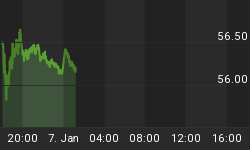
Preparing comments on any investment topic day before FOMC announces U.S. interest rate policy is probably a futile gesture. That the announcement comes on Halloween provides an opportunity for cutesy comments which will be avoided. However according to the UN FAO, the world consumed 18.774 million tonnes of pumpkins, squash and gourds in the latest reporting year. Sorry to Halloween enthusiasts, but pumpkins are not a separate reporting classification. That level of consumption is 19% over the previous five years, and is part of the reason your pumpkins cost more each year. Higher prices for Agri-Foods is not an unusual condition any longer.
This week's chart shows the price performance of some of the more important Agri-Foods. At the bottom of the chart the S&P is shown, and it does indicate an increase though rather insignificant in comparison to the others. As has been reported in previous writings, wheat prices have risen dramatically. Right behind it is barley. Farmers switched as much land as possible to other more exciting grains this past year causing barley to be scarcer. Beer consumers should not worry as no brewers have reported that production will be cut due to the supply of barley. Extensive planting of corn for ethanol consumption was overly enthusiastic, pushing price down until recently. Agri-Food prices may have individual situations in any one crop year, but the global shortage continues to dominate. Price is always the indicator of market equilibrium. As the chart shows, prices are telling investors that the world is generally short Agri-Foods. Investors attuned to these price signals have benefited, and will likely benefit for a decade or more.
AGRI-FOOD THOUGHTS are from Ned W. Schmidt,CFA,CEBS, publisher of Agri-Food Value View, a monthly exploration of the Agri-Food grand cycle being created by China, India, and Eco-energy. To review a recent issue write to agrifoodvalueview@earthlink.net.















